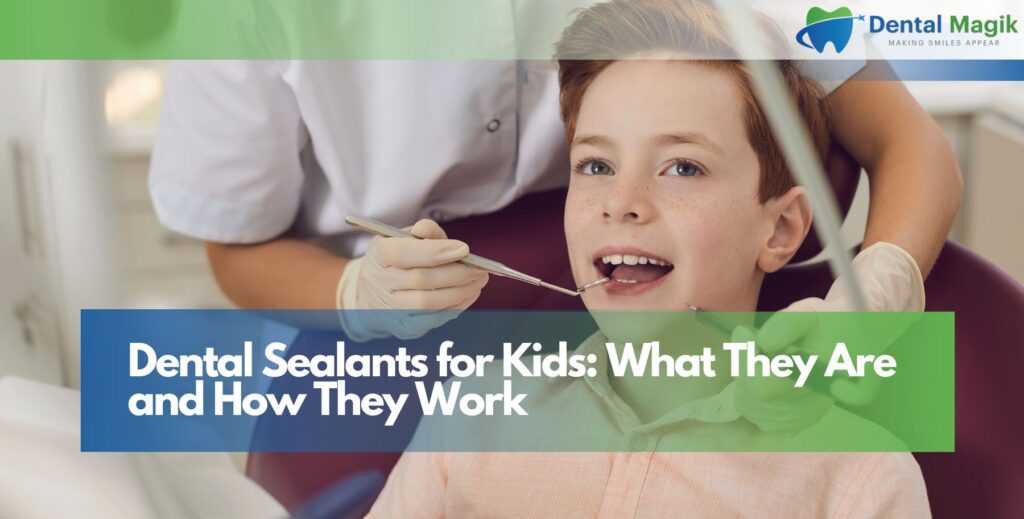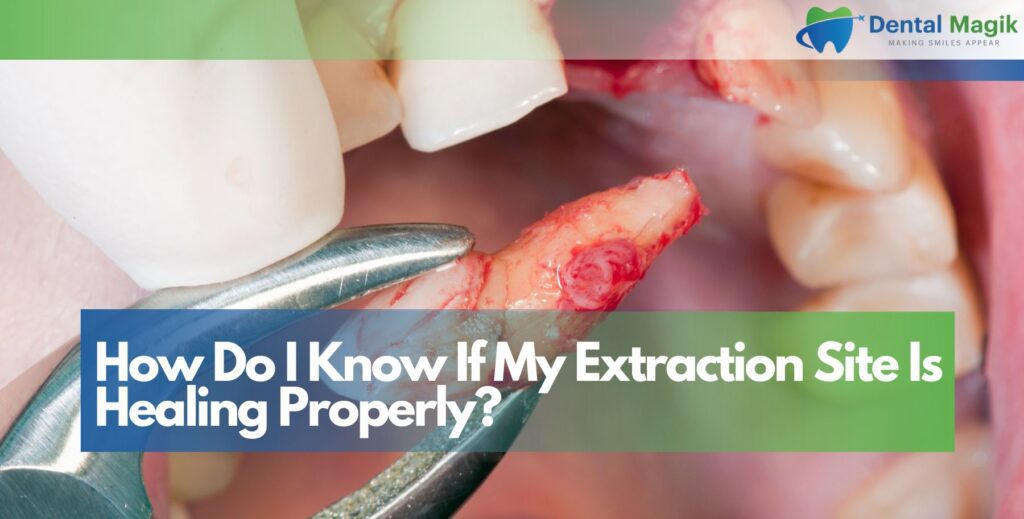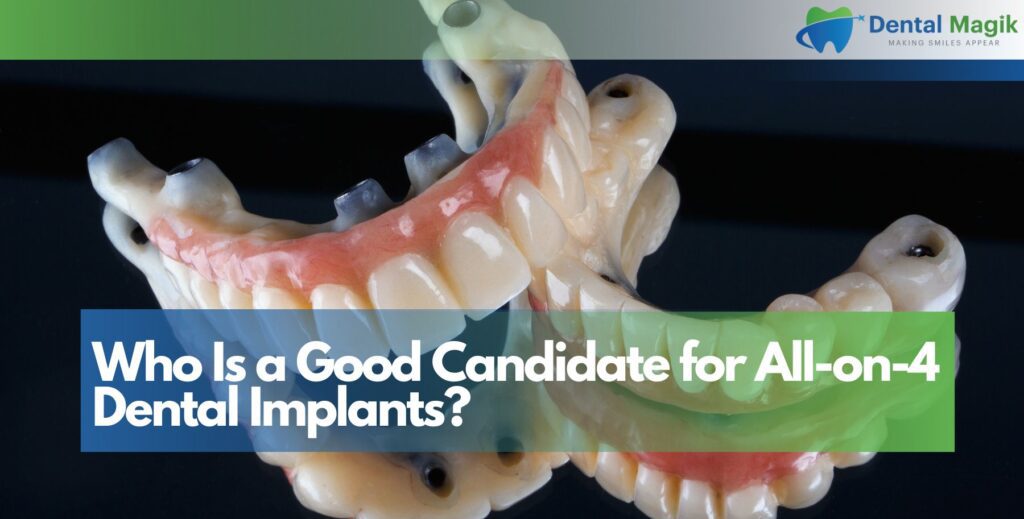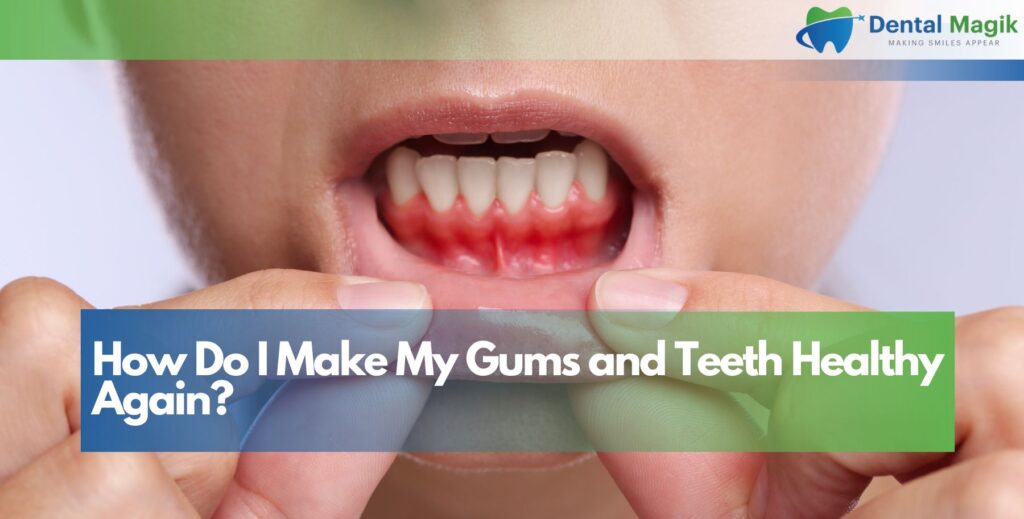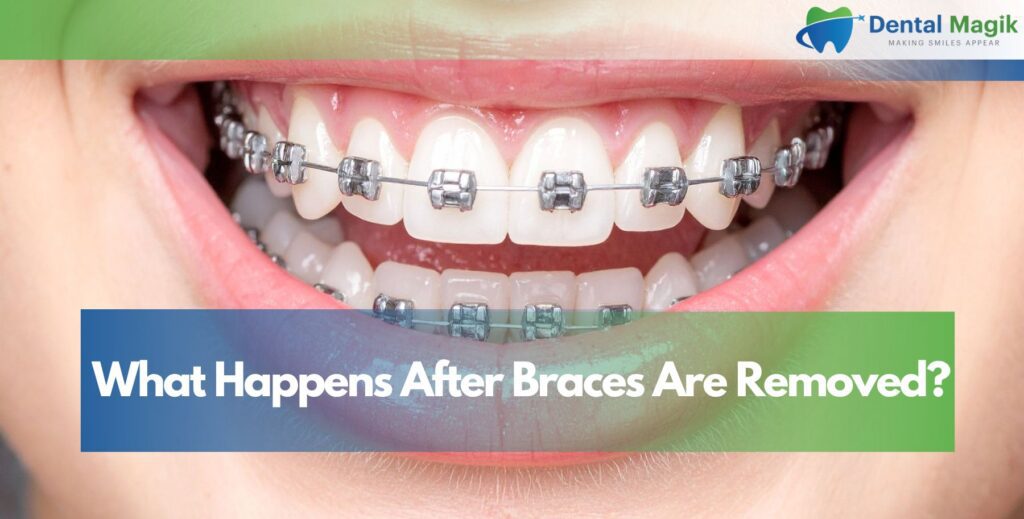As a parent, you want to give your child the best possible start in life – and that includes protecting their precious smile. One of the most effective ways to prevent tooth decay in children is through dental sealants, a simple yet powerful preventive treatment that can significantly reduce cavities in young teeth.
Dental sealants are thin, protective coatings applied to the chewing surfaces of back teeth (molars and premolars) to prevent decay. Think of them as a shield that protects your child’s teeth from harmful bacteria and food particles that can lead to cavities. With childhood tooth decay affecting millions of children worldwide, sealants have become an essential tool in pediatric dentistry.
What Are Dental Sealants?
Dental sealants are thin, plastic resin coatings that are painted onto the chewing surfaces of teeth, particularly the back molars where most cavities occur in children. These clear or tooth-colored protective barriers create a smooth surface over the deep grooves and pits naturally found in teeth, making them easier to clean and less susceptible to decay.
The material used for sealants is typically a BPA-free resin that bonds securely to the tooth enamel. Once applied, sealants can last for several years with proper care, providing long-term protection during your child’s most cavity-prone years.
Why Children Need Dental Sealants
Children are particularly vulnerable to tooth decay for several reasons. First, their brushing and flossing techniques are still developing, making it difficult to thoroughly clean all surfaces of their teeth. Second, the deep grooves and pits in molars are naturally difficult to clean, even for adults. Finally, children’s dietary habits often include more sugary snacks and drinks, which feed the bacteria that cause cavities.
Studies show that children without sealants are three times more likely to develop cavities than those with sealants. This makes sealants one of the most cost-effective preventive treatments available in pediatric dentistry.
How Do Dental Sealants Work?
Understanding how dental sealants work requires a basic knowledge of how cavities form. Tooth decay occurs when bacteria in the mouth feed on sugars and starches from food, producing acids that attack tooth enamel. Over time, these acids create small holes or cavities in the teeth.
Dental sealants work by creating a physical barrier between the tooth surface and harmful bacteria. The smooth, sealed surface prevents food particles and bacteria from getting trapped in the deep grooves and pits of teeth, where they would normally be difficult to remove with regular brushing.
The Science Behind Sealant Protection
The effectiveness of sealants lies in their ability to block the pathway that bacteria use to reach the tooth surface. When sealants are properly applied, they fill in the microscopic spaces and grooves where bacteria typically hide. This creates a smooth, easy-to-clean surface that significantly reduces the risk of decay.
Research has shown that sealants can reduce cavity risk by up to 80% in the first two years after application and continue to provide protection for up to 10 years. Even if a sealant chips or wears away partially, the protection it provided during its lifetime can have lasting benefits for your child’s oral health.
Types of Dental Sealants
There are several types of dental sealants available, each with its own advantages and applications. Understanding these options can help you make an informed decision about your child’s dental care.
Resin-Based Sealants
Resin-based sealants are the most commonly used type in pediatric dentistry. These sealants are made from a durable plastic material that bonds strongly to tooth enamel. They’re available in clear or tooth-colored options, making them virtually invisible once applied.
The main advantage of resin-based sealants is their excellent retention rate and durability. They typically last 5-10 years with proper care and can withstand normal chewing forces. However, they require the tooth to be completely dry during application, which can be challenging in young children.
Glass Ionomer Sealants
Glass ionomer sealants are made from a mixture of glass and organic acid. While they’re not as durable as resin-based sealants, they have the unique ability to release fluoride, which provides additional protection against decay.
These sealants are particularly useful for children who have difficulty keeping their mouths dry during treatment or for newly erupted teeth that may still be partially covered by gum tissue. They’re often used as a temporary measure until a more permanent resin sealant can be applied.
The Dental Sealant Application Process
The process of applying dental sealants is quick, painless, and doesn’t require any drilling or removal of tooth structure. Understanding what to expect can help both you and your child feel more comfortable during the appointment.
Step-by-Step Application
The sealant application process typically takes 15-30 minutes per tooth and involves several careful steps. First, the dentist will thoroughly clean the tooth surface to remove any plaque or debris. This is usually done with a special paste and rotating brush.
Next, the tooth is dried and isolated to prevent contamination from saliva. A mild acid solution is then applied to the chewing surface to create tiny rough spots that help the sealant bond to the tooth. After rinsing and drying the tooth again, the liquid sealant is carefully painted onto the grooves and pits.
Finally, a special curing light is used to harden the sealant, creating a durable protective coating. The dentist will check the bite and make any necessary adjustments to ensure the sealant doesn’t interfere with normal chewing.
What to Expect During the Appointment
Most children find the sealant application process comfortable and interesting to watch. The procedure is completely painless, and many children describe it as feeling like having their teeth “painted.” The dentist may use fun language to explain the process, such as calling the sealant “tooth armor” or “super shields.”
Your child will need to keep their mouth open for the duration of the treatment, but breaks can be taken as needed. The entire appointment, including preparation and application for multiple teeth, typically takes 30-60 minutes.
Benefits of Dental Sealants for Children
The benefits of dental sealants extend far beyond simple cavity prevention. These protective coatings offer numerous advantages that can positively impact your child’s oral health and overall well-being.
Cavity Prevention
The primary benefit of dental sealants is their exceptional ability to prevent cavities. Clinical studies consistently show that sealants can reduce the risk of decay in treated teeth by 80% or more. This protection is particularly valuable during the cavity-prone years of childhood and adolescence.
By preventing cavities, sealants help children avoid the pain, discomfort, and potential complications associated with tooth decay. This means fewer dental appointments for fillings and a reduced risk of more serious dental problems later in life.
Cost-Effectiveness
From a financial perspective, dental sealants are one of the most cost-effective preventive treatments available. The cost of applying sealants is significantly less than the cost of treating cavities with fillings, and the long-term savings can be substantial.
Many dental insurance plans cover sealants for children, recognizing their value in preventing more expensive treatments. Even without insurance coverage, the investment in sealants often pays for itself by preventing the need for multiple fillings over the years.
Improved Oral Hygiene
Sealants make it easier for children to maintain good oral hygiene by creating smooth, easy-to-clean surfaces on their back teeth. This can help establish better brushing habits and boost confidence in their ability to keep their teeth clean.
The smooth surface created by sealants also makes it easier for parents to help their children brush effectively, particularly in the hard-to-reach areas of the mouth where cavities commonly develop.
Who Should Get Dental Sealants?
While dental sealants can benefit people of all ages, they’re particularly valuable for children and teenagers. Understanding who is a good candidate for sealants can help you make the best decision for your child’s oral health.
Age Recommendations
The ideal time to apply sealants is shortly after the permanent molars erupt. The first permanent molars typically appear around age 6, while the second molars usually emerge around age 12. Applying sealants soon after these teeth appear provides the maximum protective benefit.
However, sealants can be beneficial at any age if the teeth are free from decay and have deep grooves or pits that are difficult to clean. Some children may also benefit from sealants on their primary (baby) teeth if they have deep grooves and are at high risk for decay.
Risk Factors for Tooth Decay
Certain children may be particularly good candidates for sealants due to increased risk factors for tooth decay. These include children with a history of cavities, those who consume frequent sugary snacks or drinks, and children with deep grooves or pits in their teeth.
Other risk factors include poor oral hygiene habits, lack of fluoride exposure, and certain medical conditions that affect saliva production. Your dentist can evaluate your child’s individual risk factors and recommend whether sealants would be beneficial.
Caring for Sealed Teeth
Once your child has received dental sealants, proper care is essential to maintain their effectiveness and ensure long-lasting protection. While sealants are durable, they still require attention and maintenance.
Daily Oral Hygiene
Children with sealants should continue their regular oral hygiene routine, including brushing twice daily with fluoride toothpaste and flossing daily. The smooth surface created by sealants actually makes cleaning easier, but consistent care is still essential.
It’s important to teach your child to brush gently around the sealed areas and to avoid using excessive force that could damage the sealant. Regular fluoride use continues to be important for overall oral health, even with sealants in place.
Foods and Habits to Avoid
While sealants are designed to withstand normal chewing forces, certain foods and habits can potentially damage them. Hard, sticky, or chewy foods like ice, hard candies, and sticky caramels should be consumed in moderation or avoided entirely.
Habits like teeth grinding, nail biting, or using teeth as tools can also potentially damage sealants. If your child has a habit of grinding their teeth, discuss this with your dentist, as a night guard may be recommended to protect both the sealants and the underlying teeth.
Regular Dental Check-ups
Regular dental check-ups are crucial for maintaining sealed teeth. During these visits, your dentist will examine the sealants for any signs of wear, chipping, or loss. If necessary, sealants can be repaired or replaced to maintain optimal protection.
These check-ups also provide an opportunity to reinforce good oral hygiene habits and address any concerns about your child’s oral health. Most dentists recommend check-ups every six months, though some children may need more frequent visits based on their individual risk factors.
Potential Risks and Considerations
While dental sealants are generally safe and effective, it’s important to understand any potential risks or considerations before proceeding with treatment.
Safety Concerns
Dental sealants have been used safely for decades, and extensive research has confirmed their safety and effectiveness. The materials used in sealants are biocompatible and pose no significant health risks when properly applied.
Some parents have expressed concerns about BPA exposure from dental sealants. However, studies have shown that the amount of BPA exposure from sealants is minimal and well below levels that would cause health concerns. Many sealant materials are now BPA-free, further reducing any potential exposure.
Limitations of Sealants
While sealants are highly effective at preventing decay on the chewing surfaces of teeth, they don’t protect against cavities that form between teeth or on other surfaces. This means that regular brushing, flossing, and fluoride use remain essential for complete oral health protection.
Sealants also don’t last forever and may need to be replaced over time. Regular dental check-ups are important to monitor the condition of sealants and replace them when necessary.
Conclusion
Dental sealants represent one of the most effective and practical approaches to preventing tooth decay in children. By creating a protective barrier against bacteria and food particles, sealants can significantly reduce your child’s risk of developing cavities during their most vulnerable years.
The benefits of sealants extend beyond simple cavity prevention, offering cost-effective protection that can save both money and discomfort in the long run. With proper care and regular dental visits, sealants can provide years of reliable protection for your child’s smile.
If you’re considering dental sealants for your child, consult with a qualified pediatric dentist who can evaluate your child’s individual needs and risk factors. Every child deserves the best possible start in life, and protecting their oral health is an investment in their overall well-being and confidence.
For families in New Jersey looking for expert pediatric dental care, consider consulting with a trusted dentist in East Brunswick, NJ who can provide comprehensive evaluation and treatment options tailored to your child’s specific needs. Professional guidance ensures that your child receives the most appropriate and effective preventive care available.
Frequently Asked Questions
At what age should my child get dental sealants?
The ideal time is shortly after the permanent molars erupt, typically around ages 6 and 12. However, sealants can be beneficial at any age if the teeth are decay-free and have deep grooves.
Are dental sealants covered by insurance?
Many dental insurance plans cover sealants for children, typically up to age 18. Coverage may vary, so check with your insurance provider for specific details about your plan.
How long do dental sealants last?
With proper care, dental sealants can last 5-10 years. Regular dental check-ups will help monitor their condition and determine when replacement is needed.
Do sealants require special care?
No special care is required beyond regular brushing and flossing. However, avoiding hard, sticky foods and habits like teeth grinding can help preserve the sealants.
Can sealants be applied to baby teeth?
Yes, sealants can be applied to primary teeth if they have deep grooves and the child is at high risk for decay. This is less common but may be recommended in certain cases.
Are there any side effects from dental sealants?
Side effects are rare and typically minor. Some children may experience temporary sensitivity, but this usually resolves quickly. Allergic reactions to sealant materials are extremely rare.
What happens if a sealant falls off?
If a sealant falls off, contact your dentist to have it evaluated and potentially replaced. The underlying tooth may be more vulnerable to decay without the protective sealant.
Can adults get dental sealants?
Yes, adults can receive sealants if they have deep grooves or pits in their teeth and are at risk for decay. However, sealants are most commonly recommended for children and teenagers.

